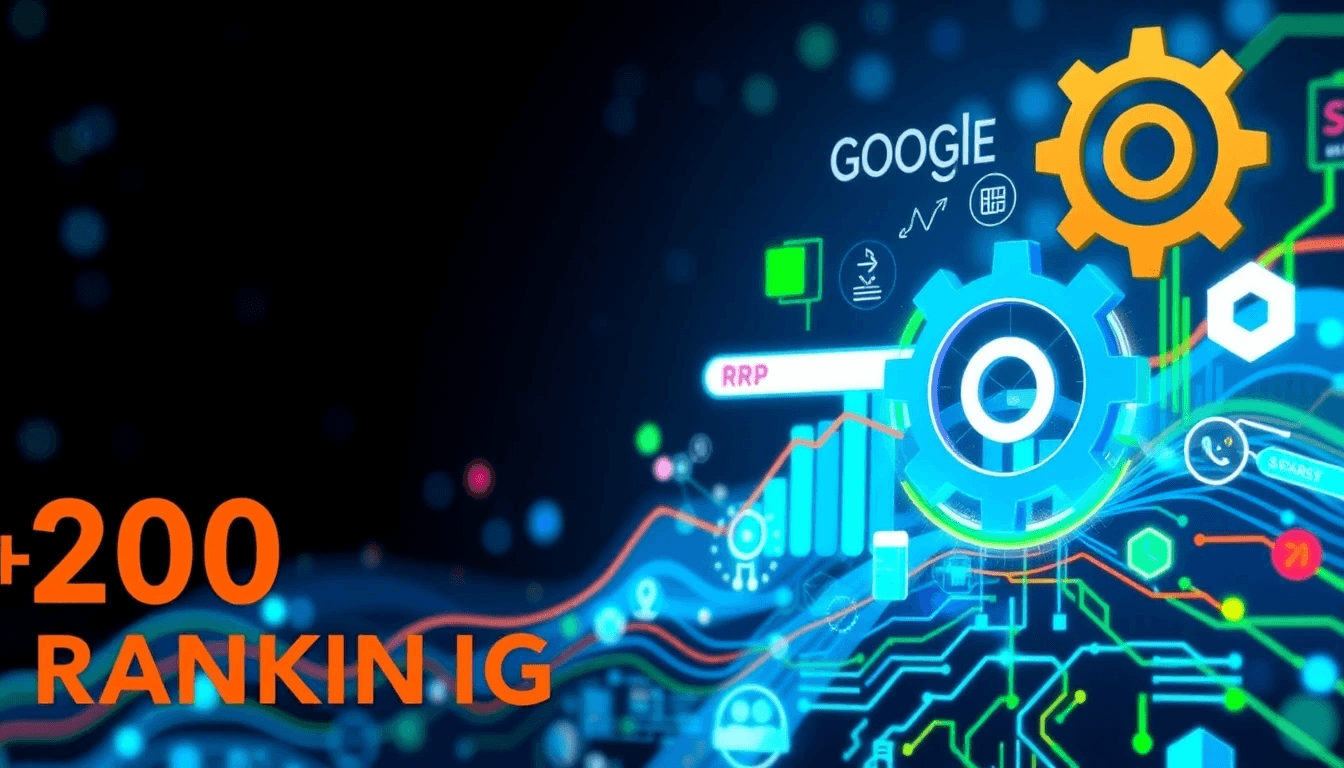The Ultimate Guide to Google’s 200+ Ranking Factors in 2025
Search engine optimization (SEO) is a constantly evolving field, and Google’s algorithm is at the heart of it. With over 200 ranking factors influencing where your website lands in search results, understanding these factors is crucial for anyone looking to improve their online visibility.
In this comprehensive guide, we’ll break down Google’s ranking factors into clear categories, explain their importance, and provide actionable tips to help you optimize your website for better rankings in 2025.
The Top 8 Google Ranking Factors You Need to Know
While Google uses over 200 factors to rank websites, these eight are the most critical to focus on:
- Quality Content: Content remains king. Google prioritizes high-quality, informative, and engaging content that meets user intent.
- Backlinks: Links from authoritative websites act as votes of confidence, signaling to Google that your content is valuable.
- Technical SEO: Ensure your website is fast, mobile-friendly, and easy for search engines to crawl and index.
- Keyword Optimization: Use relevant keywords naturally throughout your content to help Google understand your page’s topic.
- User Experience (UX): A seamless, intuitive user experience keeps visitors engaged and reduces bounce rates.
- Schema Markup: Structured data helps search engines better understand your content, potentially leading to rich snippets.
- Social Signals: While not a direct ranking factor, social shares and engagement can indirectly boost your visibility.
- Brand Signals: A strong, recognizable brand can improve trust and authority in the eyes of Google.
Domain-Level Factors
Your domain name and its history play a role in how Google perceives your website. Key factors include:
- Domain Age: Older domains may have an edge, but fresh domains can still rank well with quality content.
- Keyword in Domain: While less impactful than before, a relevant keyword in your domain can still help.
- Domain History: A domain with a clean history is more likely to rank higher than one with a spammy past.
- Country-Specific TLDs: Using a country-code top-level domain (e.g., .uk, .ca) can help with local rankings.
Page-Level Factors
On-page optimization is critical for ranking well. Here are the most important page-level factors:
- Keyword in Title Tag: Including your target keyword in the title tag is still a strong relevancy signal.
- Content Length: Longer, in-depth content tends to perform better, especially for competitive keywords.
- Image Optimization: Use descriptive file names, alt text, and captions to help search engines understand your images.
- Internal Linking: Linking to other pages on your site helps search engines discover and index your content.
- Mobile-Friendliness: With mobile-first indexing, a responsive design is essential.
Site-Level Factors
Your website’s overall structure and performance also matter. Key site-level factors include:
- Site Architecture: A well-organized site makes it easier for search engines to crawl and index your pages.
- SSL Certificate: Secure websites (HTTPS) are favored over non-secure ones (HTTP).
- Core Web Vitals: Metrics like loading speed, interactivity, and visual stability impact user experience and rankings.
- XML Sitemap: A sitemap helps search engines understand your site’s structure and index it more efficiently.
Backlink Factors
Backlinks are one of the most powerful ranking factors. Focus on:
- Quality Over Quantity: A few links from authoritative sites are better than many from low-quality sources.
- Anchor Text: Use descriptive, keyword-rich anchor text to signal relevance.
- Link Diversity: A natural link profile includes links from a variety of sources, such as blogs, news sites, and directories.
- Link Velocity: A steady increase in backlinks is better than sudden spikes, which can look suspicious.
User Interaction Signals
Google uses user behavior to gauge the quality of search results. Key signals include:
- Click-Through Rate (CTR): Pages with higher CTRs may rank higher for their target keywords.
- Dwell Time: The longer users stay on your page, the more Google assumes it’s valuable.
- Bounce Rate: A high bounce rate can indicate that your content isn’t meeting user expectations.
- Pogosticking: If users quickly return to search results after clicking your page, it may hurt your rankings.
Special Google Algorithm Rules
Google’s algorithm includes special rules for certain types of searches:
- Query Deserves Freshness: Newer content is prioritized for time-sensitive queries.
- Local Searches: Google prioritizes local businesses for location-based queries.
- Transactional Searches: Shopping-related keywords may trigger product listings or ads.
- Brand Searches: Queries containing brand names often return multiple results from the same site.
Brand Signals
A strong brand can improve your rankings in several ways:
- Branded Searches: If users frequently search for your brand, it signals authority to Google.
- Social Media Presence: Active profiles on platforms like Facebook, Twitter, and LinkedIn can boost your brand’s credibility.
- Unlinked Brand Mentions: Even if your brand isn’t linked, mentions across the web can still help.
On-Site and Off-Site Webspam Factors
Avoid these common pitfalls to prevent penalties:
- Thin Content: Pages with little or no value can trigger a Panda penalty.
- Keyword Stuffing: Overloading your content with keywords can lead to penalties.
- Unnatural Links: Buying links or participating in link schemes can result in a Penguin penalty.
- Hacked Sites: If your site is compromised, it can be removed from search results entirely.
Conclusion
Google’s ranking factors are complex and ever-changing, but focusing on the fundamentals—quality content, technical SEO, backlinks, and user experience—will set you up for success. By staying informed and adapting to algorithm updates, you can improve your website’s visibility and drive more organic traffic.
Ready to take your SEO to the next level? Explore our IT & Tech Solutions and Digital Marketing Services to optimize your website for 2025 and beyond.

